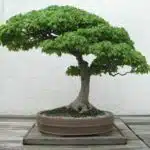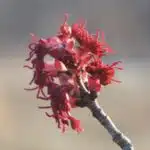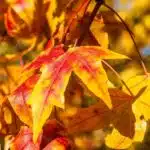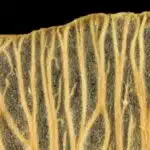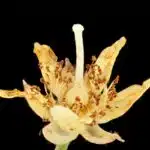The sugar maple tree, scientifically known as Acer saccharum, is a deciduous tree that is native to the northeastern regions of North America. This majestic tree is well-known for its stunning fall foliage that ranges from bright yellow to fiery orange and deep red. Additionally, it serves as an important source of sap for maple syrup production, making it an economic asset for many communities in the region.
As horticultural specialists or arborists, we understand the importance of caring for and growing sugar maple trees. In this article, we will provide a comprehensive guide on how to properly care for and grow sugar maple trees. From selecting the right location to pruning techniques and pest management strategies, our aim is to equip you with the knowledge necessary to ensure your sugar maple tree thrives and serves as a beautiful addition to your community.
Understanding The Sugar Maple Tree
Did you know that the sugar maple tree (Acer saccharum) is the most common maple species used for making maple syrup? In fact, nearly 80% of the world’s supply of maple syrup comes from this tree. Not only is it an important source of delicious syrup, but it also provides a range of other benefits.
Aside from its practical uses, the sugar maple tree is a beautiful addition to any landscape. Its leaves turn vibrant shades of red, orange, and yellow in the fall, creating a stunning display of autumn colors. The tree can also grow up to 100 feet tall and has an impressive canopy spread of up to 50 feet.
To produce high-quality maple syrup, it’s important to understand proper tapping techniques. Tapping too early or too late in the season can result in low sap yields or poor quality syrup. The ideal time for tapping is when daytime temperatures are above freezing (32°F) and nighttime temperatures are below freezing. This temperature fluctuation creates pressure changes that force sap out of the tree’s xylem vessels, making it easier to collect. Additionally, for every inch in diameter of a tree trunk, one tap can be inserted without causing harm to the tree.
Understanding these basic facts about sugar maple trees will help you appreciate their importance beyond just producing delicious syrup. In the following section, we will explore how climate and soil conditions affect their growth and development.
Climate And Soil Conditions For Growth
The Sugar Maple tree is a beautiful and iconic tree species that is native to North America. This tree can grow up to 100 feet in height, with a spread of up to 50 feet. It is known for its stunning foliage, which turns from green to yellow, orange, and red in the fall.
To ensure that your Sugar Maple tree grows healthy and strong, it is important to understand the climate and soil conditions that are ideal for its growth. The ideal temperature range for Sugar Maple trees is between 60-75 degrees Fahrenheit. If temperatures exceed this range, the tree may experience stress or damage.
Additionally, Sugar Maple trees require well-drained soil that is moist but not waterlogged. The pH level of the soil should be neutral to slightly acidic (between 6.0-7.5). To promote healthy growth, it is recommended to add the best fertilizer during the early spring months before new growth appears.
Here are three key factors to consider when choosing a location for your Sugar Maple tree:
- Sunlight: The Sugar Maple thrives in full sun to partial shade conditions.
- Space: Ensure that there is enough space for your tree’s root system to grow and expand.
- Surroundings: Avoid planting near concrete structures or pavement due to the risk of root disturbance.
By following these guidelines, you can help ensure a healthy and beautiful Sugar Maple tree in your landscape for years to come! In the next section, we will discuss how to choose the right location for planting your Sugar Maple tree.
Choosing The Right Location
Finding the perfect location for your sugar maple tree is imperative to its growth and success. Think of it as finding a home for a new member of your family. The right location will provide the necessary environment for your tree to flourish, just like how a comfortable home provides the foundation for a happy family. Two essential factors to consider are sun exposure and soil quality.
The sugar maple tree requires full sun exposure to grow effectively. It thrives in areas with at least six hours of direct sunlight every day. Without sufficient sunlight, the tree may not produce enough energy through photosynthesis, leading to stunted growth or even death. Soil quality is another critical factor that can affect the growth of your sugar maple tree. The ideal soil pH range is between 6.0 and 7.5, which means it should be slightly acidic to neutral.
When considering space requirements and tree spacing, keep in mind that sugar maples can grow up to 100 feet tall with an equal spread width at maturity. As such, they require adequate space to grow without being crowded by other trees or buildings. A general rule of thumb is to plant them at least 20 feet away from any buildings and other trees. When planning on planting multiple sugar maples, you should also space them apart by at least 40 feet.
As you can see, finding the right location for your sugar maple tree requires careful consideration of several factors such as sun exposure and soil quality while keeping in mind their space requirements and proper spacing distance from other trees or buildings. With proper attention given in these areas, your sugar maple will have an excellent chance of growing strong roots and flourishing into a beautiful addition to your landscape design. Next up: transplanting techniques!
Transplanting Techniques
Transplanting Techniques:
When transplanting a sugar maple tree, the root ball is one of the most important factors to consider. The root ball should be kept intact during the transplanting process to ensure that the tree can continue to absorb nutrients and water from the soil. To do this, dig a hole around the tree that is twice as wide as the root ball but no deeper than necessary. Carefully remove the tree from its current location and place it in the center of the hole. Then, fill in any gaps with fresh soil.
Timing is also critical when transplanting a sugar maple tree. The best time to transplant is during early spring or late fall when temperatures are milder and rainfall is typically higher. Transplanting during these times will allow for optimal root growth while minimizing stress on the tree. Avoid transplanting during hot summer months or during drought conditions as this can cause significant damage to the tree.
Aftercare for a transplanted sugar maple tree is crucial for ensuring healthy growth rates. Water regularly and deeply, especially during dry spells, to maintain moisture levels in the soil around your newly transplanted tree. Additionally, fertilize your sugar maple with a balanced fertilizer designed for trees once per year in early spring or late fall to provide essential nutrients that promote growth and development. With proper care and attention, you can enjoy watching your transplanted sugar maple grow into a beautiful addition to your landscape.
As we move onto watering and fertilizing techniques for your sugar maple tree, it’s important to remember that after transplantation, it may take some time before you see new growth on your plant due to shock experienced by being moved from its original location. However, with proper care and attention paid towards watering and fertilizing at regular intervals throughout the growing season, you’ll begin to see healthy new growth emerge over time.
Watering And Fertilizing
After successfully transplanting your sugar maple tree, it is important to establish a proper watering and fertilizer schedule. This will help ensure that your tree grows strong and healthy in its new location. Watering frequency should be based on the weather conditions in your area, as well as the soil type and drainage capabilities of your planting site.
During periods of hot and dry weather, it may be necessary to water your sugar maple tree more frequently to prevent drought stress. However, overwatering can also be harmful, so it is important to monitor soil moisture levels regularly. A good rule of thumb is to water deeply once or twice per week, allowing the soil to dry out slightly between watering sessions.
In terms of fertilization, sugar maples generally do not require heavy feeding. A slow-release fertilizer applied in early spring can help provide essential nutrients throughout the growing season. It is important to avoid using high-nitrogen fertilizers, which can promote excessive leaf growth at the expense of root development. Instead, opt for a balanced fertilizer with a lower nitrogen content for optimal growth.
Moving forward, pruning for optimal growth is an important aspect of sugar maple tree care. By removing dead or damaged branches and shaping the tree’s canopy, you can help promote healthy growth and improve overall aesthetic appeal. Proper pruning techniques should be used to avoid damaging the tree’s bark or leaving open wounds that are susceptible to disease.
Pruning For Optimal Growth
Pruning is a crucial aspect of maintaining optimal growth for sugar maple trees. Proper pruning techniques and shaping methods can help to enhance the tree’s overall health, promote strong branch structure, and improve its aesthetic appeal. A well-pruned sugar maple tree can also increase the amount of sunlight that reaches the lower branches, which can stimulate new growth and prevent disease.
When it comes to pruning a sugar maple tree, there are several key techniques to keep in mind. First, it’s important to remove any dead or damaged branches as soon as possible. These branches not only look unsightly but can also provide an entry point for pests and diseases. Additionally, removing any crossing or rubbing branches can help to prevent damage from occurring in the future.
Shaping methods are another essential part of pruning a sugar maple tree. One effective strategy is to encourage a central leader, which involves selecting one main branch to serve as the trunk and removing any competing leaders. This technique helps to create a strong vertical structure that can withstand high winds and heavy snow loads. It’s also important to maintain proper spacing between branches, ensuring that they don’t grow too close together or become overcrowded.
Moving forward into dealing with tree diseases, maintaining proper pruning practices can significantly reduce the risk of infection and help to mitigate the spread of diseases throughout your sugar maple tree’s canopy.
Dealing With Tree Diseases
Pruning is an essential part of the sugar maple’s growth process. However, even with proper pruning techniques, trees can still fall victim to various diseases. The majority of these diseases are caused by fungi that can infect the sugar maple tree and cause significant damage if left untreated. Identifying symptoms early on and implementing preventative measures is key to maintaining a healthy sugar maple tree.
One interesting statistic is that more than 50% of all sugar maple trees in North America have been affected by some type of disease. This alarming number highlights the importance of being proactive in protecting your tree’s health. One common disease affecting sugar maples is tar spot. This fungus causes black spots to appear on the leaves, which can lead to reduced photosynthesis and ultimately weaken the tree’s overall health.
To prevent tar spot and other diseases from affecting your sugar maple tree, it’s important to take preventative measures. One effective method is to keep the area around the tree clean and free from debris as this can harbor harmful fungi spores. Additionally, avoid overwatering or using excessive amounts of fertilizer as this can create ideal conditions for fungal growth. Maintaining proper pruning techniques and regularly inspecting your tree for signs of disease should also be a part of your prevention strategy.
Identifying symptoms early on and implementing preventative measures will go a long way in protecting your sugar maple tree from disease. However, if you do notice any signs of infection or damage, it’s important to act quickly and seek professional assistance from an arborist or horticultural specialist who can recommend appropriate pest management strategies to help protect your valuable investment for years to come.
Pest Management Strategies
- Sugar maple trees are susceptible to a variety of pests, so identifying the pest is key to establishing an effective pest management strategy.
- Natural control methods for sugar maple pests include releasing beneficial predators and employing physical and cultural control techniques.
- Chemical control methods for sugar maple pests include applying insecticides, fungicides, and herbicides to the tree and surrounding areas.
- Insecticides can be used to target specific pests, such as borers and aphids, while fungicides can be used to target diseases, such as powdery mildew.
- Herbicides can be used to eradicate weeds and other vegetation that compete with the sugar maple tree for resources.
- Care should be taken when applying chemical control methods, as they can also negatively impact beneficial species and the environment.
Identifying Pests
Identifying pests that can harm a sugar maple tree is essential to the plant’s overall health and longevity. Pests can cause significant damage, leading to reduced growth or even death of the tree. As a horticultural specialist, it is crucial to identify these pests early on and implement pest management strategies promptly.
Prevention methods are an effective way of managing pests in sugar maple trees. One way to prevent pests from attacking the tree is by keeping it healthy through proper care and maintenance. Pruning regularly, watering appropriately, and ensuring adequate soil drainage can help keep the tree healthy and less susceptible to pests. Additionally, planting companion plants that deter harmful insects can also be useful in preventing pest infestations.
Natural remedies are another effective way of managing pests in sugar maple trees. Horticultural oils such as neem oil and horticultural soap can be used to control aphids, spider mites, and other common pests. Predatory insects like ladybugs and lacewings can also be introduced into the tree’s environment to control harmful insect populations naturally. It is crucial to use natural remedies safely and correctly to avoid harming beneficial insects or damaging the tree.
In conclusion, identifying pests early on is essential for implementing appropriate pest management strategies. Prevention methods such as proper care and maintenance can help keep the tree healthy and less susceptible to pests, while natural remedies such as predatory insects or horticultural oils can be used to control harmful insect populations without using harsh chemicals or pesticides that could harm beneficial insects. By staying vigilant and proactive about identifying potential pest problems, we can ensure our sugar maple trees remain healthy for generations to come.
Natural Control Methods
Effective pest management strategies are critical for maintaining the health and longevity of sugar maple trees. Among the various methods available, natural control methods have gained popularity due to their organic nature that doesn’t harm beneficial insects or the environment. Natural control methods can range from companion planting to introducing predatory insects into the tree’s environment.
Companion planting is a natural pest management strategy that involves planting certain plants around the sugar maple tree to repel harmful insects. Companion plants such as marigolds, chives, and garlic can deter pests like aphids, spider mites, and Japanese beetles. The strong aroma of these plants confuses and repels pests, preventing them from attacking the sugar maple tree. Planting companion plants also creates a diverse ecosystem that attracts beneficial insects like bees and butterflies that help pollinate the tree.
Another effective natural control method is using predatory insects to manage harmful insect populations. Ladybugs, lacewings, and praying mantises are examples of predatory insects that feed on aphids, spider mites, scales, and other common sugar maple pests. Introducing these predators into the tree’s environment can help maintain balance by keeping harmful insect populations in check. Using predatory insects is an eco-friendly approach to pest management that doesn’t require harsh chemicals or pesticides.
In conclusion, natural control methods such as companion planting and using predatory insects provide effective organic pest management strategies for sugar maple trees. These methods offer sustainable solutions that preserve beneficial organisms while protecting trees from harmful pests. By incorporating these natural approaches into our horticultural practices effectively, we can ensure thriving healthy sugar maple trees for generations to come.
Chemical Control Methods
Integrated pest management (IPM) is a holistic approach to pest control that emphasizes the use of natural remedies and chemical control methods as a last resort. Chemical control methods are used when natural remedies are not effective or when there is a severe infestation that requires immediate action. However, chemical control methods should be used with caution because they can harm beneficial organisms and the environment if misused.
One common chemical control method is using insecticides to manage pest populations. Insecticides work by killing harmful insects but can also harm beneficial insects like bees, butterflies, and ladybugs. Therefore, it is essential to choose insecticides that specifically target the pests without harming other organisms. Another chemical control method is using fungicides to prevent fungal diseases in sugar maple trees. Fungicides work by inhibiting the growth of fungi that cause diseases like leaf spot, anthracnose, and powdery mildew.
While chemical control methods can effectively manage pest populations, they should be used as part of an integrated approach that considers natural remedies first. By combining natural remedies like companion planting and predatory insects with chemical controls, we can minimize environmental impact while effectively managing pests in our sugar maple trees. The goal of IPM is to find a balance between protecting our trees from harmful pests while preserving beneficial organisms and the environment for future generations.
Mulching And Ground Cover
Mulching is an essential practice for maintaining healthy sugar maple trees. Applying a layer of organic material around the base of the tree provides numerous benefits, such as retaining soil moisture, suppressing weed growth, and regulating soil temperature. Using compost as a mulch is an excellent choice because it enriches the soil with nutrients and improves its structure over time. It also helps to promote beneficial fungal activity, which can enhance root health.
Apart from improving plant health, mulching also aids in weed control. By creating a physical barrier between the soil and sunlight, mulch prevents weed seeds from germinating and competing with your sugar maple tree for nutrients. However, it is crucial to ensure that you remove any existing weeds before applying mulch; otherwise, they will continue to grow under the organic layer. Aim to maintain a depth of two to three inches of mulch around your tree’s base.
In summary, using compost as a mulch is an excellent way to improve your sugar maple tree’s health while keeping weeds at bay. Remember to remove any existing weeds before applying a two to three-inch layer of organic material around the base of your tree. In the next section, we will discuss how to properly stake and support young sugar maple trees for optimal growth and development.
Tree Staking And Support
Sugar maple trees can grow to be quite tall and have a tendency to sway in the wind, which can lead to damage or even uprooting. Therefore, it is important to properly stake and support your sugar maple tree as it grows. Tree anchoring is a common method used to secure trees in place and prevent them from falling or becoming damaged during high winds. This involves tying a rope or cable around the trunk of the tree and then securing it into the ground using stakes or anchors.
When staking your sugar maple tree, be sure to use soft ties such as rubber tubing or strips of cloth instead of wire or twine that could cut into the bark of the tree. Also, avoid staking too tightly as this can restrict growth and lead to weak roots. It is best to stake a newly planted sugar maple tree for no more than one year, after which it should be able to stand on its own without additional support.
Properly anchoring your sugar maple tree will also help prevent wind damage. When strong winds blow through an area, they can cause significant stress on trees, which can result in broken branches or uprooted trees. By properly anchoring your sugar maple tree, you can help ensure that it remains stable during high winds and minimize any potential damage.
Fall foliage colors and timing are important factors to consider when caring for your sugar maple tree. Understanding when leaves change color and how long they last can help you plan for maintenance tasks such as leaf removal and pruning. In the next section, we will discuss these topics in more detail.
Fall Foliage Colors And Timing
As the sugar maple tree grows, it may require staking and support to ensure its stability. Just as a young sapling needs guidance to grow straight and strong, the sugar maple requires assistance to reach its full potential. Without proper support, the weight of the branches can cause bending or breakage, inhibiting growth and reducing health. Staking should be done during planting or shortly after and should be removed once the tree has established itself.
But as autumn approaches, attention turns from supporting the sugar maple to admiring its stunning foliage. Photographing foliage is a popular pastime for many nature enthusiasts, and the colors of a sugar maple in fall are truly breathtaking. However, environmental factors affecting coloration can vary from year to year. Temperature, sunlight exposure, soil moisture levels, and other factors can all play a role in determining the vibrancy and timing of fall colors.
To better understand these environmental factors, consider this table outlining some common examples:
| Environmental Factor | Effect on Coloration |
|---|---|
| Warm temperatures | Duller colors |
| Cool temperatures | More vibrant colors |
| Early frost | Colors may change sooner |
| Dry weather | Shorter duration of color |
Understanding these factors can help predict when the best time is to photograph sugar maple foliage or simply enjoy it in nature. But once autumn has passed and winter sets in, attention returns to caring for the sugar maple tree – including preparing for the next season’s harvest: maple syrup production.
Harvesting Maple Syrup
One of the most popular uses for sugar maple trees is to harvest sap and produce maple syrup. The process of tapping a maple tree involves drilling a hole into the trunk and inserting a spout, which allows the sap to flow out into a collection container. Sap generally flows best when daytime temperatures are above freezing and nighttime temperatures are below freezing. Once collected, the sap is boiled down to evaporate the water content until it reaches the desired consistency for syrup.
There are various tapping techniques that can be used depending on the size and age of the tree, as well as environmental factors such as climate and soil quality. It is important to follow proper tapping procedures to ensure that the tree remains healthy and productive. Some tips include avoiding tapping too many holes in one tree, spacing taps evenly around the trunk, and using appropriate equipment for drilling and collecting sap.
Once you have harvested your own maple syrup, there are countless delicious recipes that can be made with this sweet treat. From classic pancakes and waffles to unique marinades and dressings, maple syrup is a versatile ingredient that can enhance both sweet and savory dishes. Whether you choose to share your homemade syrup with friends and family or keep it all for yourself, tapping your own sugar maple tree can be a rewarding experience that yields both tasty results and a deeper appreciation for nature’s bounty.
As you continue to care for your sugar maple tree, consider utilizing its wood in addition to harvesting its sap. Sugar maple wood is known for its strength, durability, and beautiful grain patterns. It is often used in furniture making, flooring, cabinetry, musical instruments, and more. In the next section we will explore some creative ways to use sugar maple wood in your home or garden decor.
Uses For Sugar Maple Wood
After harvesting maple syrup, it is important to find uses for the remaining parts of the sugar maple tree. One common use for sugar maple wood is in woodworking projects. Sugar maple wood is known for its durability and strength, making it an excellent material for furniture design. Its fine grain also makes it a popular choice for decorative purposes.
When using sugar maple wood in woodworking projects or furniture design, it is important to properly dry and cure the wood to prevent warping or cracking. This can take several months or even up to a year depending on the size of the wood pieces being used. Once dried, sugar maple wood can be crafted into a variety of items such as chairs, tables, and cabinets.
Aside from woodworking, sugar maple wood is also used in other industries such as flooring and instrument making. Its unique properties make it a sought-after material that adds both beauty and functionality to any project.
- Sugar maple wood is known for its durability and strength
- The fine grain of sugar maple makes it ideal for decorative purposes
- Proper drying and curing techniques are essential when working with sugar maple wood
- Sugar maple wood is used in various industries including furniture design and instrument making
As horticultural specialists, it’s important to not only focus on the care and maintenance of plants but also on their potential uses beyond just their aesthetics. Sugar maples offer an excellent example of this concept as they provide not only beautiful fall foliage but also valuable resources like sap for syrup production and strong hardwood for woodworking projects. Whether you’re a homeowner looking to add some natural charm to your home or a professional craftsman seeking high-quality materials, consider incorporating sugar maple into your next project. In the subsequent section, we’ll explore the common varieties of sugar maple trees found throughout North America.
Common Varieties Of Sugar Maple Trees
Sugar maple trees (Acer saccharum) are commonly found in the northeastern part of North America, and they’re known for their beauty and ability to produce high-quality syrup. The sugar maple tree is a slow-growing deciduous tree that can reach heights of up to 100 feet with a spread of about 50 feet. It has a dense crown that provides ample shade during the summer months.
There are several varieties of sugar maple trees, but the most common ones are ‘Green Mountain,’ ‘Legacy,’ ‘Norwegian Sunset,’ and ‘Fall Fiesta.’ Each variety has its own unique characteristics, such as leaf shape and color, growth rate, and disease resistance. Sugar maple tree identification can be done by looking at the leaves, bark, and general growing pattern.
Maple syrup production is one of the most prominent uses of the sugar maple tree. The sap from these trees is extracted in early spring when temperatures rise above freezing during the day and fall below freezing at night. This process is known as sugaring off or tapping. The sap contains sugar that is boiled down to create syrup. One tree can produce up to 10 gallons of sap per season, which translates to around one quart of syrup.
In conclusion, understanding the common varieties and characteristics of sugar maple trees is essential for proper care and maintenance. Maple syrup production is an exciting aspect of growing sugar maples, making them an attractive option for homeowners who wish to try their hand at producing their own syrup. In the subsequent section about troubleshooting common tree problems, we’ll explore some issues that may arise when caring for these beautiful trees.
Troubleshooting Common Tree Problems
Sugar maple trees are a staple in North American landscapes, providing shade, aesthetic appeal, and syrup. However, like all trees, they are vulnerable to pests and diseases that can cause damage or even death. In this section, we will discuss how to identify pests and take preventative measures to keep your sugar maple tree healthy.
Identifying pests is the first step in preventing damage to your sugar maple tree. Common pests include aphids, scale insects, spider mites, and caterpillars. Aphids are small insects that feed on the sap of leaves and stems, causing distortion and discoloration. Scale insects are tiny parasitic creatures that attach themselves to the bark of the tree and feed on its sap. Spider mites spin webs on the underside of leaves and suck out plant fluids. Caterpillars eat away at foliage, leaving behind unsightly holes.
Preventative measures can be taken to keep pests at bay. One way is by maintaining proper tree hygiene through regular pruning and removing debris from around the base of the tree. Additionally, planting companion plants such as marigolds can help deter certain pests. Chemical treatments such as insecticides should be used as a last resort after other methods have been exhausted. By identifying pests early and taking preventative measures, you can ensure that your sugar maple tree remains healthy for years to come.
Conclusion
The sugar maple tree is a popular choice for homeowners and landscapers alike due to its stunning fall foliage and versatility in use. Understanding the specific needs of this tree, such as its preferred soil and climate conditions, is essential for successful growth. Careful selection of the planting location and proper transplanting techniques are important steps to ensure healthy growth.
It’s important to note that the sugar maple tree requires regular watering and fertilization to maintain optimal health. Additionally, harvesting maple syrup and using the wood for various purposes can be both enjoyable and beneficial. Common varieties of the sugar maple include the Autumn Blaze, Green Mountain, and Legacy.
In conclusion, with proper care and attention, the sugar maple tree can thrive in a variety of environments. As horticultural specialists or arborists, it’s our responsibility to educate ourselves on the unique needs of each species we work with. With this knowledge, we can help ensure that these beautiful trees continue to enhance our landscapes for years to come. As the saying goes, “a little bit of care goes a long way.”
Image Credits
- “Acer saccharum (sugar maple tree in winter) (Newark campus of Ohio State University, Newark, Ohio, USA) (3 February 2017)” by James St. John (featured)




